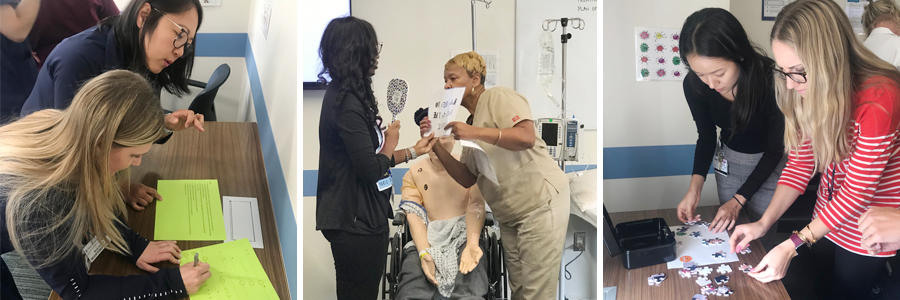
To celebrate Sepsis Awareness Month, Penn Presbyterian Medical Center’s Casey Lieb, MSN, and Paula Gabriel, MSN — unit-based educators — teamed up to organize a sepsis-related escape room for the second year in a row. This hands-on, simulation-based activity gave staff members the chance to test their critical thinking skills and get a refresher course on sepsis education, all while having a great time with their colleagues.
Sepsis is the leading cause of readmissions and the third leading cause of death in the United States. It occurs when infection-fighting chemicals released in the bloodstream trigger inflammation, causing impaired blood flow, tissue damage, organ failure, and potential death. Prevention and early intervention is an all-hands-on-deck affair. Because staff, caregivers, and patients all must stay vigilant and communicate effectively to ensure a good outcome, the theme of this year’s escape room was sepsis survivorship and safe discharge.
In the escape room, each group navigated their patient, Sepsis Sam, through a safe discharge by cracking eight challenges and puzzles. But racing against the clock wasn’t their only goal. This year, the groups were also scored on their communication and collaboration. After each escape, the team debriefed and discussed their strengths and opportunities for improvement.
“A safe discharge is a multidisciplinary effort. Physicians, nurses, respiratory therapists, social workers — they’re all part of the team. Our goal was to show the importance of working as a group to ensure a smooth, safe, and transparent discharge,” Gabriel said. “We also emphasized the importance of getting patients and caregivers on board so they fully understand how to follow discharge instructions and recognized the signs and symptoms of a recurrent infection. Even just using the word ‘sepsis’ around patients and families can make a huge difference.”
This year’s escape room was another resounding success, but it’s not just PPMC staff who are loving these activities. Lieb and Gabriel have gained fans outside of the hospital after sharing the activity with ECRI and the TRENDS Acute & Critical Care Nursing Conference. They’ve also integrated escape room experiences into the health system’s Gateway to Critical Care course and have published their work.
“Over the past year, we’ve learned so much. We’ve had the opportunity to implement escape rooms across different settings, and we get requests all the time from other hospitals looking for advice and resources,” Lieb said. “It’s such a fun and creative way to help staff test their knowledge, and it’s a simplistic concept that can be applied to pretty much anything you want to teach. It’s been really rewarding, and we’re glad that we were able to take it up a notch this year.”